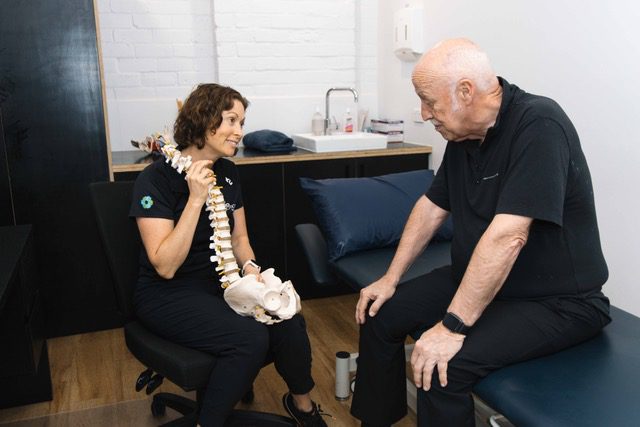
Men’s Pelvic Health: Why It Matters
Historically, pelvic floor issues have been associated with women, but men experience similar dysfunctions—including bladder, bowel, and sexual health concerns, as well as pelvic pain. These problems affect men of all ages, not just older individuals, and can have a significant impact on daily life.
What Is the Pelvic Floor?
Think of your pelvic floor as a muscular hammock at the base of your pelvis, stretching from your tailbone to your pubic bone. It plays several critical roles, including:
✔ Supporting your organs
✔ Controlling bladder and bowel function
✔ Contributing to sexual health
✔ Providing core stability
Why Does Pelvic Floor Tightness Happen?
Pelvic floor muscles can become tight, overactive, or painful due to a variety of factors:
- Stress & Anxiety:Chronic tension in the body often affects the pelvic floor.
- Persistent Pain Conditions:Lower back, hip, or abdominal pain can cause compensatory muscle tightening.
- Muscle Guarding or Overuse:Straining during bowel movements or holding in urine can fatigue pelvic muscles.
- Injury or Trauma:Direct trauma, surgery, or prolonged bike use may lead to protective muscle guarding.
- Sedentary Behaviour:Long hours sitting can contribute to pelvic muscle dysfunction.
Signs Your Pelvic Floor Might Be Overactive
- Pelvic pain(discomfort in the groin, perineum, testicles, or lower back)
- Bladder symptoms(frequent urination, weak stream, or incomplete emptying)
- Bowel issues(constipation, pain during bowel movements)
- Sexual dysfunction(pain during ejaculation, erectile dysfunction)
If you’re experiencing any of these symptoms, a physiotherapy assessment can help pinpoint the cause and guide treatment.
How Can a Physiotherapist Help?
At PROmotion Health, our Men’s Health service is led by Georgie Adams, Senior Pelvic Health Physiotherapist. Through individualised assessments, we determine the root causes and create a personalised plan, which may include:
✔ Education & Awareness – Understanding how pelvic muscles function is key to managing symptoms.
✔ Manual Therapy – External and internal techniques to relieve tension and improve mobility.
✔ Relaxation & Breathing Techniques – Learning how to down-train overactive muscles.
✔ Biofeedback – Real-time monitoring to help control and relax pelvic muscles. ✔ Postural & Movement Strategies – Addressing underlying imbalances contributing to discomfort.
✔ Exercise Therapy – Development of a tailored home exercise program focusing on stretches, relaxation exercises, and coordinated muscle engagement.
Don’t Ignore Pelvic Pain—Seek Help Today!
Pelvic health issues are common but highly treatable. If you’ve been struggling with persistent discomfort, don’t suffer in silence—book an assessment with Georgie and take the first step toward better health.
👉 Contact us today to learn more! Book Now